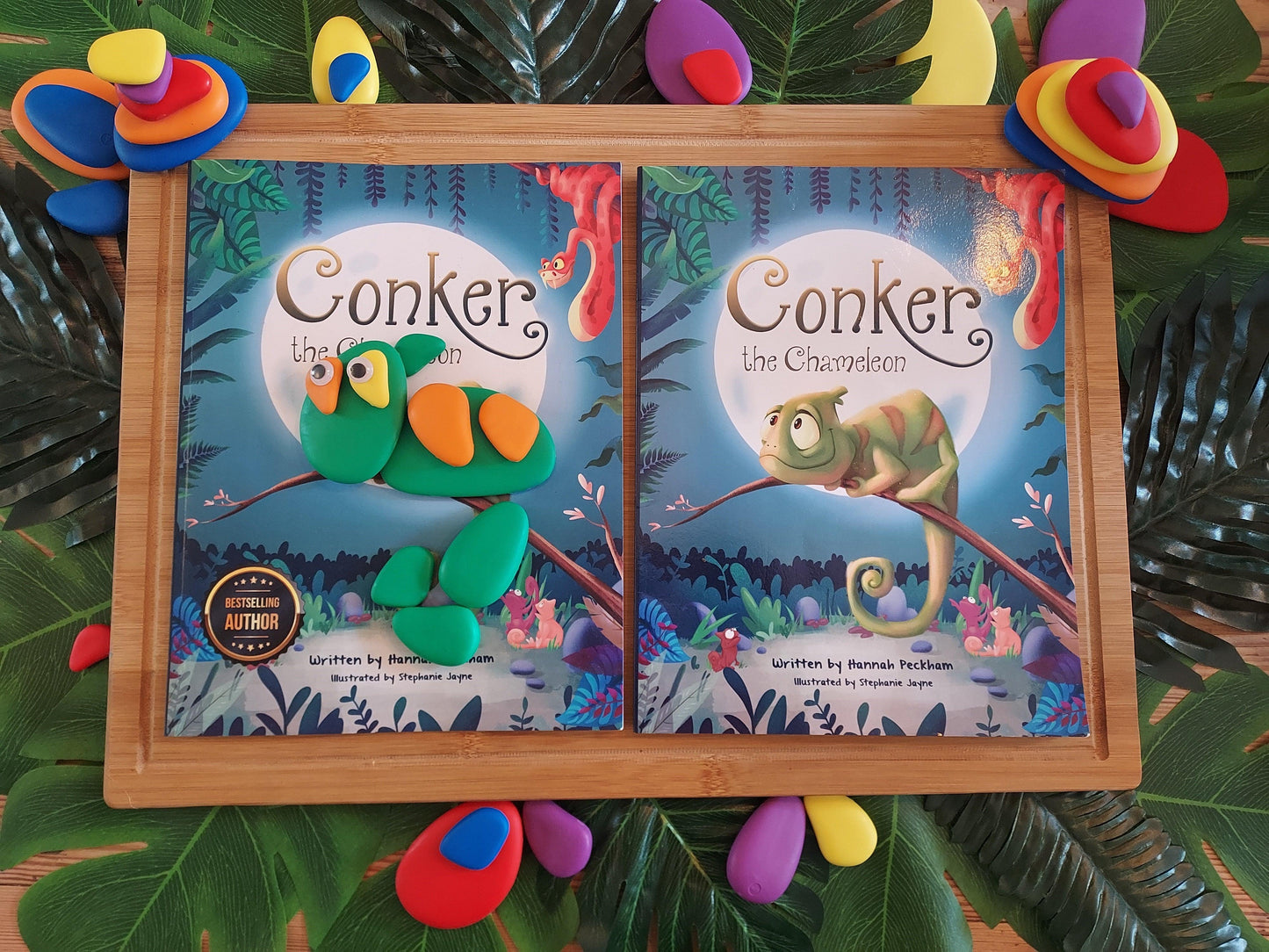
Does your child find it hard at times to self regulate those big emotions? Do you find it hard to chat about those emotions, or know how to deal with them as a caregiver?
Conker the Chameleon loves to facilitate those difficult conversation about the big emotions we are all learning to deal with, especially in early years development of children.
Today we are looking at just how important it is to develop our children’s mental health and well-being, especially after home schooling and their worlds being turned upside down. Now more than ever children need to be able to identify, regulate those big feelings.
Mental health is a one of the many important areas we need to recognise and talk about for the development of our Children. Research carried out in 2017 by the office for national statistics and NHS digital show that about three children in every primary school class has a mental health challenge.
There is no better way than communicating with children than through stories. When researching and writing Conker the chameleon I have communicated with wonderful teachers, parents and caregivers who are leading the way in social and emotional development, however sadly this often depends on the individual early years setting.
The good news is that opening these conversations do not have to be a serious or even frightening scenarios, you don’t need a PHD in philosophy to gently introduce this topic to your children.
It can start at home, with a little story about a Chameleon called Conker who can’t change colour combined with simple play ideas.
Key Message with Conker The Chameleon
Conker the chameleon, key messages are;
- How important talking about feelings is for parents and children’s social, emotional development also essential good mental health.
- At a time when our children are gaining a sense of self, it is an ideal time to start exploring their feelings and ability to regulate big feelings by identifying emotions in a safe enabling environment.
Emotions don’t come with a guidebook, unfortunately there is no one size fits all model. The best way to know what helps your child is to talk to them and learn together through stories and play. Children tend to openly communicate when they are engrossed in play.
Allowing children to concentrate on these complex issues and connecting during a story accompanied by open-ended play, will help build the foundation for self -regulation. Many valuable lessons can be learnt, self care strategies all through helping your child discover themselves, in turn you connect with them, learning how you can help them as an individual.
Let’s Play Conker the Chameleon and the Rainbow Pebbles
Conker the Chameleon teams up for open ended play with Edx Education Rainbow Pebbles. They are tactile, versatile and work well alongside the chameleon rainbow feelings page that teaches the colours for the zones of regulation.
Conker wishes to be like all his brothers. In the end he learns to accept his differences feel happy with who he is. Here are more structured play ideas you can introduce with Conker and the rainbow pebbles.
Why not make your own conker Conker talk about;
- who he was,
- what he is good at
- what made him different
- then see if you can do the same for yourself

Head over to the rainbow page in Conker the chameleon where they gently introduce the concept of the zones of regulation (widely used in early years settings to tie colours to emotions).
Introducing a colour to a feeling can help a child to understand that feeling better.
The zones focus on four main colours (basic description)
- Red - Anger
- Green - Happy
- Yellow - Worried
- Blue – Sad
To help get you started there are mindful activity at the back of the book to introduce to your open-ended play. My Chameleon tree encourages children to have a think about themselves, their feelings and the world around them.
Normalising that everyone feels a whole host of different feelings, understanding these and knowing what helps if you are feeling overwhelmed is something we can help our children to do from a very early age.

You can do this by thinking about the who’s, what’s where’s and when’s…
- what helps when you feel sad?
- Who can you talk to?
- How does it feel?
- Where do you feel it in your body?
- What helps when you feel like this?
- what doesn’t help?
- How can I help?
- Try to avoid the why question ‘why are you feeling like this?’
You don’t need all the answers, you can be on this journey together, remember it’s connection not perfection that you are aiming for, and have fun.
Conker the Chameleon & Hannah Peckham, Author
